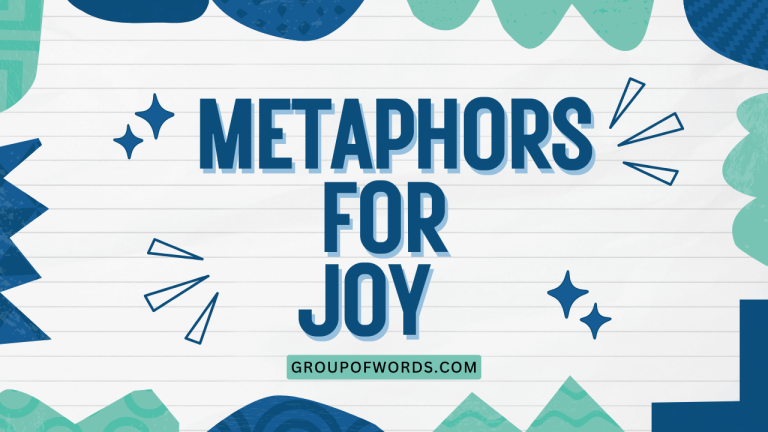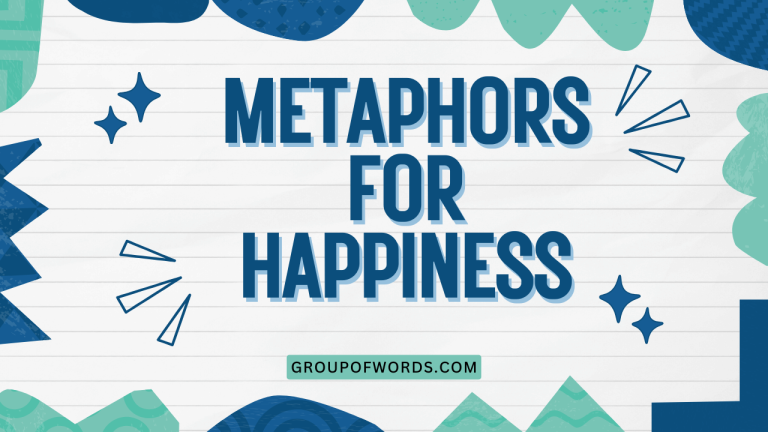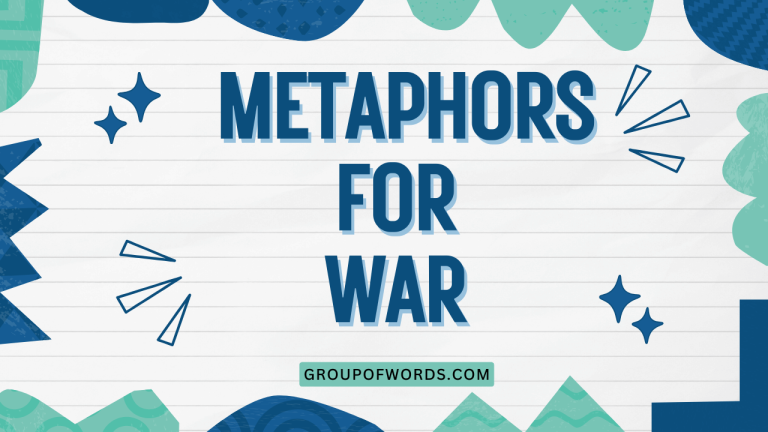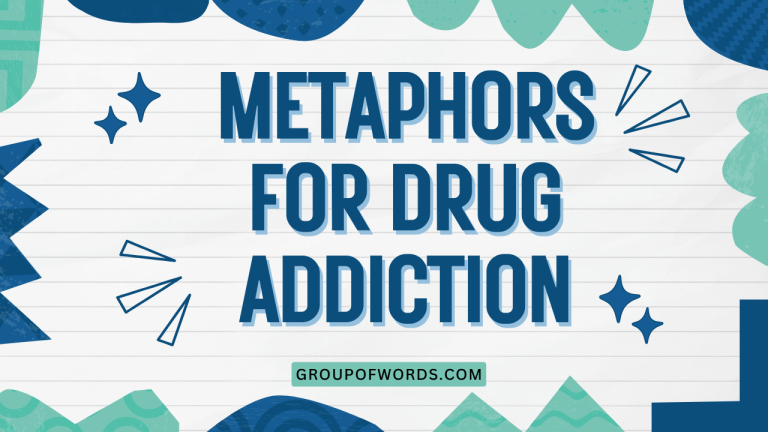Similes for Motivation: Inspiring Language
Understanding how to use similes effectively can greatly enhance your writing and speaking, especially when aiming to motivate or inspire. Similes, by drawing comparisons between different things, make abstract concepts more relatable and vivid.
This article will explore the use of similes specifically for motivational purposes, providing you with a comprehensive guide on how to use them to create impactful and memorable messages. Whether you’re a student, a teacher, a writer, or a public speaker, mastering the art of motivational similes will give you a powerful tool to captivate and encourage your audience.
This article delves into the definition, structure, and various types of motivational similes. It provides numerous examples and usage rules, helping you avoid common mistakes and refine your skills.
Practical exercises are included to reinforce your learning, and advanced topics are discussed for those seeking a deeper understanding. By the end of this article, you’ll be well-equipped to use similes effectively to inspire and motivate others.
Table of Contents
- Definition and Explanation of Similes
- Structural Breakdown of Similes
- Types and Categories of Motivational Similes
- Examples of Similes for Motivation
- Usage Rules for Similes
- Common Mistakes When Using Similes
- Practice Exercises
- Advanced Topics: Nuances and Subtleties
- Frequently Asked Questions
- Conclusion
Definition and Explanation of Similes
A simile is a figure of speech that directly compares two different things using the words “like” or “as.” The purpose of a simile is to create a vivid image or to emphasize a particular quality by associating it with something familiar or easily understood. Similes are essential tools in writing and speaking, adding color, depth, and clarity to communication. They are particularly effective in motivational contexts, where the goal is to inspire action or change.
In motivational language, similes can transform abstract concepts like “determination” or “courage” into tangible, relatable ideas. For example, saying someone is “as brave as a lion” immediately conveys a sense of fearlessness and strength.
The power of a simile lies in its ability to evoke emotions and create a connection between the speaker and the audience.
The function of a simile extends beyond mere comparison. It serves to illuminate, clarify, and amplify the message.
By linking the unfamiliar to the familiar, similes make complex ideas accessible and engaging. In motivational settings, this can be the key to sparking enthusiasm and encouraging action.
Structural Breakdown of Similes
The basic structure of a simile consists of three main components: the subject, the linking word (either “like” or “as”), and the object of comparison. The subject is the thing being described, and the object of comparison is what it is being compared to. The linking word establishes the relationship between the two.
Consider the simile: “Her determination was like a steel rod.” Here, “her determination” is the subject, “like” is the linking word, and “a steel rod” is the object of comparison. This structure is straightforward, but the impact can be significant, conveying the strength and unyielding nature of her determination.
Variations in this structure can add nuance and complexity. For instance, similes can be embedded within longer sentences or combined with other figures of speech.
However, the core elements – subject, linking word, and object of comparison – remain essential for a simile to be effective.
The key to creating powerful similes lies in choosing objects of comparison that resonate with the audience and accurately reflect the quality being emphasized. A well-chosen simile can transform a mundane statement into a memorable and inspiring one.
Types and Categories of Motivational Similes
Motivational similes can be categorized based on the specific quality they aim to emphasize. Some common categories include:
Similes for Strength and Resilience
These similes highlight the ability to withstand challenges and overcome obstacles. They often use objects known for their durability or power.
Similes for Courage and Bravery
These similes emphasize fearlessness and the willingness to face danger. They often draw comparisons to animals known for their courage or historical figures who displayed bravery.
Similes for Determination and Persistence
These similes focus on the ability to stay focused and committed to a goal, even in the face of adversity. They often use objects that represent unwavering focus or relentless effort.
Similes for Potential and Growth
These similes highlight the possibility of future success and development. They often use metaphors related to nature, such as seeds growing into trees, or potential energy being unleashed.
Similes for Inspiration and Aspiration
These similes aim to uplift and encourage, often drawing comparisons to ideals or aspirational figures. They inspire a sense of hope and possibility.
Examples of Similes for Motivation
The following tables provide examples of similes categorized by the quality they aim to emphasize. Each example is designed to inspire and motivate.
Examples of Similes for Strength and Resilience
The following table displays various similes that focus on strength and resilience, highlighting the ability to withstand challenges and bounce back from setbacks.
| Simile | Explanation |
|---|---|
| As strong as an ox | Implies immense physical strength and endurance. |
| Like a rock in a storm | Suggests unwavering stability and resistance to adversity. |
| As tough as nails | Conveys resilience and an unyielding spirit. |
| Like a fortress against attack | Indicates impenetrable strength and protection. |
| As firm as granite | Highlights unwavering resolve and steadfastness. |
| Like a phoenix rising from the ashes | Represents the ability to overcome setbacks and emerge stronger. |
| As resilient as a rubber band | Suggests the ability to stretch and recover from pressure. |
| Like a mighty oak weathering a storm | Implies strength and the ability to endure difficult times. |
| As unyielding as steel | Conveys unwavering strength and determination. |
| Like a mountain standing tall | Indicates resilience and the ability to withstand challenges. |
| As sturdy as an old tree | Suggests a long-lasting and dependable strength. |
| Like a shield against arrows | Represents protection and the ability to deflect harm. |
| As unbreakable as a diamond | Highlights exceptional strength and durability. |
| Like a warrior standing firm | Implies courage and the ability to hold one’s ground. |
| As steadfast as the North Star | Conveys unwavering guidance and reliability. |
| Like a bridge supporting heavy loads | Indicates the ability to bear burdens and provide support. |
| As durable as a well-built house | Suggests longevity and the ability to withstand the test of time. |
| Like a rooted tree resisting the wind | Implies stability and the ability to remain grounded. |
| As impenetrable as a stone wall | Conveys resistance and the inability to be breached. |
| Like an anchor holding firm in the sea | Indicates stability and the ability to remain steadfast. |
| As solid as concrete | Highlights reliability and unyielding strength. |
| Like armor protecting a knight | Represents defense and the ability to withstand attacks. |
| As tough as leather | Suggests durability and the ability to endure wear and tear. |
| Like a dam holding back the flood | Implies control and the ability to contain powerful forces. |
| As resistant as a well-forged sword | Conveys strength and the ability to withstand pressure. |
Examples of Similes for Courage and Bravery
This table provides similes that illustrate courage and bravery, highlighting the willingness to face fear and danger.
| Simile | Explanation |
|---|---|
| As brave as a lion | Implies fearlessness and courage in the face of danger. |
| Like a soldier charging into battle | Suggests unwavering commitment and bravery in action. |
| As fearless as a hawk | Conveys a sense of confidence and lack of apprehension. |
| Like a knight facing a dragon | Indicates courage and the willingness to confront formidable challenges. |
| As bold as a mountain climber | Highlights daring and a willingness to take risks. |
| Like a firefighter running into a burning building | Represents selflessness and bravery in the face of danger. |
| As courageous as a first responder | Suggests bravery and a willingness to help others in need. |
| Like a pioneer exploring uncharted territory | Implies daring and the willingness to venture into the unknown. |
| As valiant as a warrior | Conveys bravery and strength in combat. |
| Like a captain steering through a storm | Indicates leadership and courage in challenging situations. |
| As intrepid as an explorer | Suggests fearlessness and a thirst for adventure. |
| Like a doctor performing a life-saving surgery | Represents skill and bravery in critical moments. |
| As audacious as a tightrope walker | Highlights daring and a willingness to take risks. |
| Like a whistleblower exposing corruption | Implies moral courage and a willingness to stand up for what is right. |
| As daring as a race car driver | Conveys a sense of excitement and a willingness to push boundaries. |
| Like a diver exploring the deep sea | Indicates courage and a willingness to explore the unknown depths. |
| As resolute as a civil rights activist | Suggests unwavering commitment and courage in the face of opposition. |
| Like a climber ascending a steep cliff | Implies determination and the ability to overcome obstacles. |
| As unflinching as a surgeon | Conveys focus and the ability to remain calm under pressure. |
| Like a journalist reporting from a war zone | Indicates bravery and a commitment to truth. |
| As heroic as a lifeguard | Highlights selflessness and the willingness to save others. |
| Like a pilot navigating through turbulence | Represents skill and courage in difficult situations. |
| As bold as an entrepreneur | Suggests risk-taking and a willingness to pursue new ventures. |
| Like a protester standing against injustice | Implies moral courage and standing up for one’s beliefs. |
| As fearless as a child exploring a new world | Conveys a sense of wonder and lack of apprehension. |
Examples of Similes for Determination and Persistence
This table shows similes that emphasize determination and persistence, highlighting the ability to stay focused and committed to a goal.
| Simile | Explanation |
|---|---|
| As determined as a marathon runner | Implies unwavering commitment and endurance. |
| Like a river flowing to the sea | Suggests relentless progress towards a goal. |
| As persistent as a dripping faucet | Conveys the power of consistent effort over time. |
| Like a honeybee collecting nectar | Indicates diligence and a focused approach to work. |
| As unwavering as a compass needle | Highlights steadfastness and a clear sense of direction. |
| Like a climber ascending a mountain | Represents perseverance and the ability to overcome obstacles. |
| As relentless as the tide | Suggests unstoppable progress and continuous effort. |
| Like a squirrel gathering nuts for winter | Implies foresight and a diligent approach to preparation. |
| As focused as a laser beam | Conveys intense concentration and unwavering attention. |
| Like an ant carrying a heavy load | Indicates diligence and the ability to work hard towards a goal. |
| As tenacious as a bulldog | Suggests unwavering determination and a refusal to give up. |
| Like a train moving along the tracks | Represents steady progress and a clear path forward. |
| As resolute as a judge | Highlights fairness and the ability to make firm decisions. |
| Like a builder constructing a skyscraper | Implies meticulous planning and a commitment to long-term goals. |
| As diligent as a student | Conveys a commitment to learning and a strong work ethic. |
| Like a scientist conducting research | Indicates curiosity and a methodical approach to problem-solving. |
| As steadfast as a lighthouse | Suggests guidance and the ability to remain constant in changing circumstances. |
| Like an artist perfecting a masterpiece | Implies dedication and a commitment to excellence. |
| As unwavering as a mountain range | Conveys strength and the ability to endure over time. |
| Like a gardener nurturing a plant | Indicates patience and a commitment to long-term growth. |
| As persistent as raindrops eroding stone | Highlights the power of consistent, small efforts. |
| Like a detective solving a complex case | Represents thoroughness and a commitment to finding the truth. |
| As driven as an entrepreneur building a business | Suggests ambition and a strong desire to succeed. |
| Like a teacher inspiring students | Implies dedication and a commitment to helping others. |
| As committed as a volunteer | Conveys selflessness and a strong sense of purpose. |
Examples of Similes for Potential and Growth
This table presents similes that focus on potential and growth, highlighting the possibility of future success and development.
| Simile | Explanation |
|---|---|
| Like a seed waiting to sprout | Implies hidden potential and the promise of future growth. |
| As full of potential as a blank canvas | Suggests limitless possibilities and the opportunity for creation. |
| Like a bud about to bloom | Conveys anticipation and the promise of beauty and fulfillment. |
| As promising as a sunrise | Indicates a fresh start and the potential for a bright future. |
| Like a young tree reaching for the sky | Represents growth and the pursuit of higher goals. |
| As expansive as the universe | Suggests limitless possibilities and boundless potential. |
| Like a chrysalis transforming into a butterfly | Implies growth, transformation, and the realization of full potential. |
| As malleable as clay in the hands of a potter | Conveys the ability to be shaped and molded into something beautiful. |
| Like a river finding its course | Indicates a journey of discovery and the realization of one’s path. |
| As fertile as rich soil | Suggests the capacity for growth and abundance. |
| Like a diamond in the rough | Implies hidden value and the potential for brilliance. |
| As full of promise as a new dawn | Conveys hope and the potential for positive change. |
| Like a blank page waiting to be written | Suggests the opportunity to create a new story or narrative. |
| As adaptable as water | Indicates the ability to adjust to changing circumstances. |
| Like a seedling reaching for sunlight | Represents growth and the pursuit of nourishment and knowledge. |
| As flexible as bamboo in the wind | Suggests resilience and the ability to bend without breaking. |
| Like a muscle growing stronger with exercise | Implies that effort leads to growth and improvement. |
| As boundless as the ocean | Conveys limitless possibilities and untapped potential. |
| Like a student eager to learn | Indicates a thirst for knowledge and a willingness to grow. |
| As receptive as a sponge | Suggests the ability to absorb new information and experiences. |
| Like a caterpillar transforming into a butterfly | Highlights the beauty of change and growth. |
| As promising as a clear blue sky after a storm | Represents hope and new beginnings. |
| Like a seed germinating in the earth | Suggests hidden potential and the beginning of growth. |
| As expansive as a growing forest | Implies continuous growth and development. |
| Like a student excelling in their studies | Conveys achievement and realizing one’s potential. |
Examples of Similes for Inspiration and Aspiration
This table showcases similes that aim to uplift and encourage, inspiring a sense of hope and possibility.
| Simile | Explanation |
|---|---|
| Like a beacon of hope in the darkness | Implies guidance and a source of inspiration in difficult times. |
| As inspiring as a great leader | Suggests the ability to motivate and guide others towards a common goal. |
| Like a shooting star across the night sky | Conveys a sense of wonder and the pursuit of dreams. |
| As uplifting as a beautiful melody | Indicates the power to inspire joy and positive emotions. |
| Like a sunrise painting the sky with color | Represents beauty, inspiration, and new beginnings. |
| As radiant as the sun | Suggests warmth, positivity, and the ability to inspire others. |
| Like a lighthouse guiding ships to shore | Implies guidance and the ability to lead others to safety. |
| As motivational as a coach inspiring a team | Conveys the power to encourage and drive others to achieve their best. |
| Like a rainbow after a storm | Represents hope, beauty, and the promise of better times. |
| As empowering as knowledge | Suggests the ability to gain control and achieve one’s goals. |
| Like a soaring eagle | Implies freedom, vision, and the pursuit of high aspirations. |
| As fulfilling as achieving a lifelong dream | Conveys a sense of accomplishment and satisfaction. |
| Like a gentle breeze on a hot day | Suggests comfort, relief, and a sense of peace. |
| As encouraging as a supportive friend | Indicates the power of companionship and positive influence. |
| Like a work of art inspiring emotions | Represents beauty, creativity, and the power to move others. |
| As enlightening as a profound insight | Suggests understanding and a new perspective on life. |
| Like a song that lifts your spirits | Implies joy, motivation, and the power of music. |
| As comforting as a warm embrace | Conveys love, support, and a sense of security. |
| Like a book that opens new worlds | Suggests imagination, discovery, and the pursuit of knowledge. |
| As motivating as a heartfelt speech | Indicates the power of words to inspire and encourage action. |
| Like a candle illuminating the darkness | Highlights hope and guidance in challenging times. |
| As inspiring as witnessing an act of kindness | Represents the positive impact of compassion and empathy. |
| Like a story that captivates the heart | Suggests the power of narrative to inspire and move others. |
| As empowering as overcoming a personal challenge | Implies resilience and the ability to achieve personal growth. |
| Like a dream that fuels ambition | Conveys the power of aspirations to drive action and success. |
Usage Rules for Similes
To use similes effectively, it’s crucial to follow certain guidelines:
- Clarity: Ensure the comparison is clear and easily understood by your audience. Avoid obscure or overly complex references.
- Relevance: The object of comparison should be relevant to the subject and share a common quality.
- Originality: Strive for originality to make your similes more memorable and impactful. Avoid clichés.
- Appropriateness: Choose similes that are appropriate for the context and tone of your message.
- Conciseness: Keep your similes concise and to the point. Avoid unnecessary details that can dilute the impact.
It’s also important to consider the audience when crafting similes. What resonates with one group may not resonate with another.
Tailoring your similes to your audience will increase their effectiveness.
When using similes in motivational contexts, aim for comparisons that evoke positive emotions and inspire action. Avoid negative or discouraging comparisons.
Common Mistakes When Using Similes
One common mistake is using clichéd similes that have lost their impact through overuse. For example, “as busy as a bee” is a common simile, but it lacks originality and may not resonate with the audience.
Another mistake is using comparisons that are illogical or unclear. The connection between the subject and the object of comparison should be evident and relevant.
Overusing similes can also weaken their impact. Use them sparingly and strategically to emphasize key points.
Too many similes can make your writing or speaking sound forced or unnatural.
Here are some examples of common mistakes and how to correct them:
| Incorrect | Correct | Explanation |
|---|---|---|
| He was as busy as a bee. | He was as busy as a one-man band. | The corrected simile is more original and vivid. |
| Her courage was like the weather. | Her courage was like a lion’s roar. | The corrected simile is more relevant and impactful. |
| The team worked like people. | The team worked like a well-oiled machine. | The corrected simile provides a clearer and more effective comparison. |
Practice Exercises
Test your understanding of similes with the following exercises. Choose the best simile to complete each sentence.
Exercise 1: Identifying Effective Similes
Choose the best simile to complete each sentence.
| Question | Options | Answer |
|---|---|---|
| His determination was __________. | a) like a rock b) like a cloud c) like the wind | a) like a rock |
| Her courage shone __________. | a) like a flower b) like a star c) like the rain | b) like a star |
| The team’s spirit was __________. | a) like a fire b) like water c) like dust | a) like a fire |
| His potential is __________. | a) like a small box b) like the ocean c) like a closed door | b) like the ocean |
| Her inspiration was __________. | a) like a heavy weight b) like a gentle breeze c) like a loud noise | b) like a gentle breeze |
| The project’s success was __________. | a) like climbing a small hill b) like reaching the summit of a mountain c) like walking on flat ground | b) like reaching the summit of a mountain |
| Their resilience was __________. | a) like a fragile glass b) like a flexible tree c) like a crumbling wall | b) like a flexible tree |
| His focus was __________. | a) like scattered leaves b) like a laser beam c) like a gentle stream | b) like a laser beam |
| Her ambition burned __________. | a) like a flickering candle b) like a raging inferno c) like a dim bulb | b) like a raging inferno |
| The leader’s vision was __________. | a) like a blurry photograph b) like a clear map c) like a tangled web | b) like a clear map |
Exercise 2: Creating Motivational Similes
Create a simile for each of the following qualities, using “like” or “as.”
| Quality | Your Simile |
|---|---|
| Strength | |
| Courage | |
| Determination | |
| Potential | |
| Inspiration | |
| Resilience | |
| Focus | |
| Ambition | |
| Vision | |
| Motivation |
Here are possible answers:
| Quality | Possible Simile |
|---|---|
| Strength | As strong as an oak tree. |
| Courage | Like a lion facing its prey. |
| Determination | As unwavering as a compass. |
| Potential | Like a seed ready to sprout. |
| Inspiration | As uplifting as a sunrise. |
| Resilience | Like a rubber band bouncing back. |
| Focus | Like a laser beam cutting through darkness. |
| Ambition | As fiery as a dragon’s breath. |
| Vision | Like a telescope revealing distant stars. |
| Motivation | Like a spark igniting a flame. |
Advanced Topics: Nuances and Subtleties
For advanced learners, understanding the nuances and subtleties of similes can further enhance their effectiveness. One advanced technique is using implied similes, where the linking word (“like” or “as”) is omitted, creating a more subtle comparison. This can add a layer of sophistication to your writing or speaking.
Another advanced topic is the use of extended similes, where the comparison is developed over several sentences or paragraphs. This allows for a more detailed and nuanced exploration of the similarities between the subject and the object of comparison.
Additionally, consider the use of ironic similes, where the comparison is used to highlight a contrast or discrepancy. This can be a powerful tool for satire or humor.
Mastering these advanced techniques requires a deep understanding of language and a keen awareness of the audience. However, the rewards can be significant, allowing you to create similes that are truly memorable and impactful.
Frequently Asked Questions
Here are some frequently asked questions about using similes:
- What is the difference between a simile and a metaphor?
A simile compares two things using “like” or “as,” while a metaphor directly equates two things without using these words. For example, “He is like a lion” is a simile, while “He is a lion” is a metaphor.
- Can a simile be too long?
Yes, a simile can be too long if it becomes cumbersome or distracts from the main point. Keep your similes concise and focused.
- How can I avoid using clichéd similes?
Strive for originality by thinking outside the box and creating comparisons that are fresh and unexpected. Look for unique qualities that connect the subject and the object of comparison.
- Is it okay to use similes in formal writing?
Yes, similes can be used in formal writing, but use them judiciously and ensure they are appropriate for the tone and audience.
- How do I choose the right object of comparison for a simile?
Consider the qualities you want to emphasize and choose an object of comparison that embodies those qualities in a clear and relatable way.
- Can similes be used in all types of writing?
Yes, similes can be used in various types of writing, including fiction, non-fiction, poetry, and speeches. However, their effectiveness depends on the context and the skill of the writer.
- What makes a simile effective?
An effective simile is clear, relevant, original, and appropriate for the context and audience. It should also evoke a strong image or emotion.
- How can I improve my ability to create similes?
Practice regularly, read widely, and pay attention to the similes used by other writers and speakers. Experiment with different comparisons and ask for feedback on your work.
Conclusion
Mastering the art of using similes for motivation is a valuable skill for anyone seeking to inspire and encourage others. By understanding the definition, structure, and usage rules of similes, you can craft powerful and memorable messages that resonate with your audience.
Remember to strive for clarity, relevance, and originality in your comparisons, and avoid common mistakes like using clichéd similes.
Practice creating similes regularly and pay attention to the similes used by others. With time and effort, you can develop a keen eye for effective comparisons and use similes to transform your writing and speaking into a source of inspiration.
By using the tools and examples discussed in this article, you are well on your way to mastering the art of motivational similes, empowering you to create messages that uplift and encourage action.






